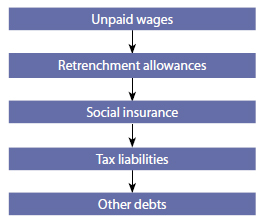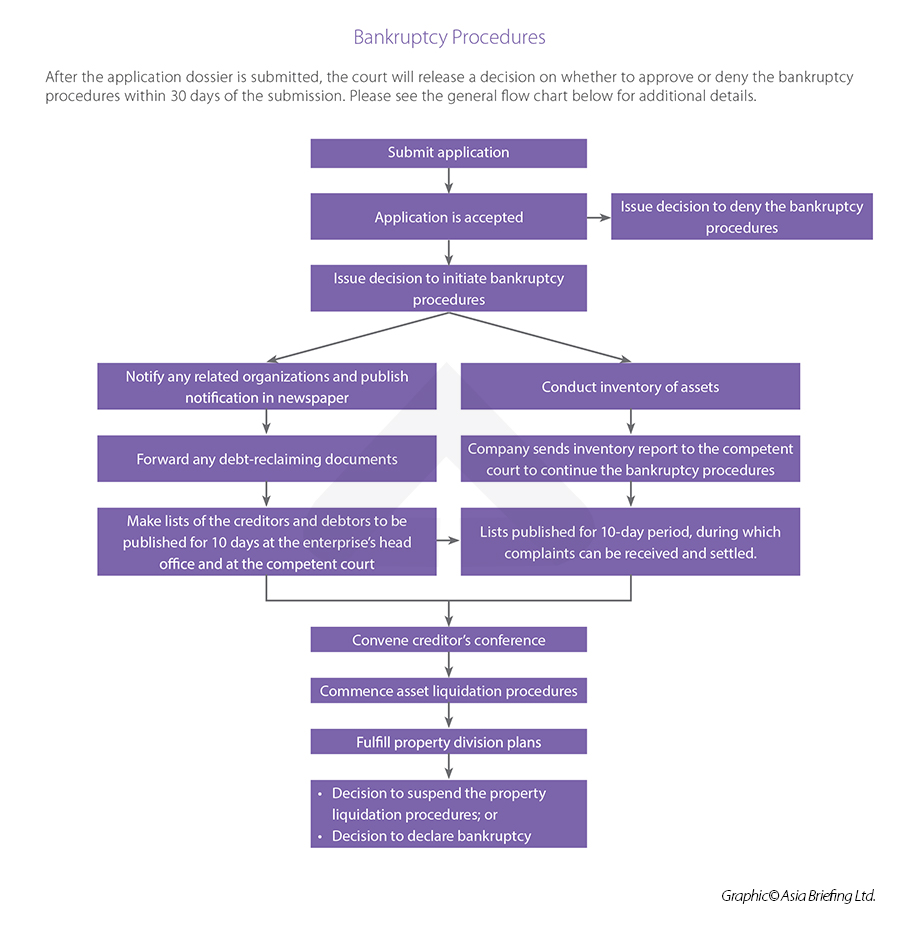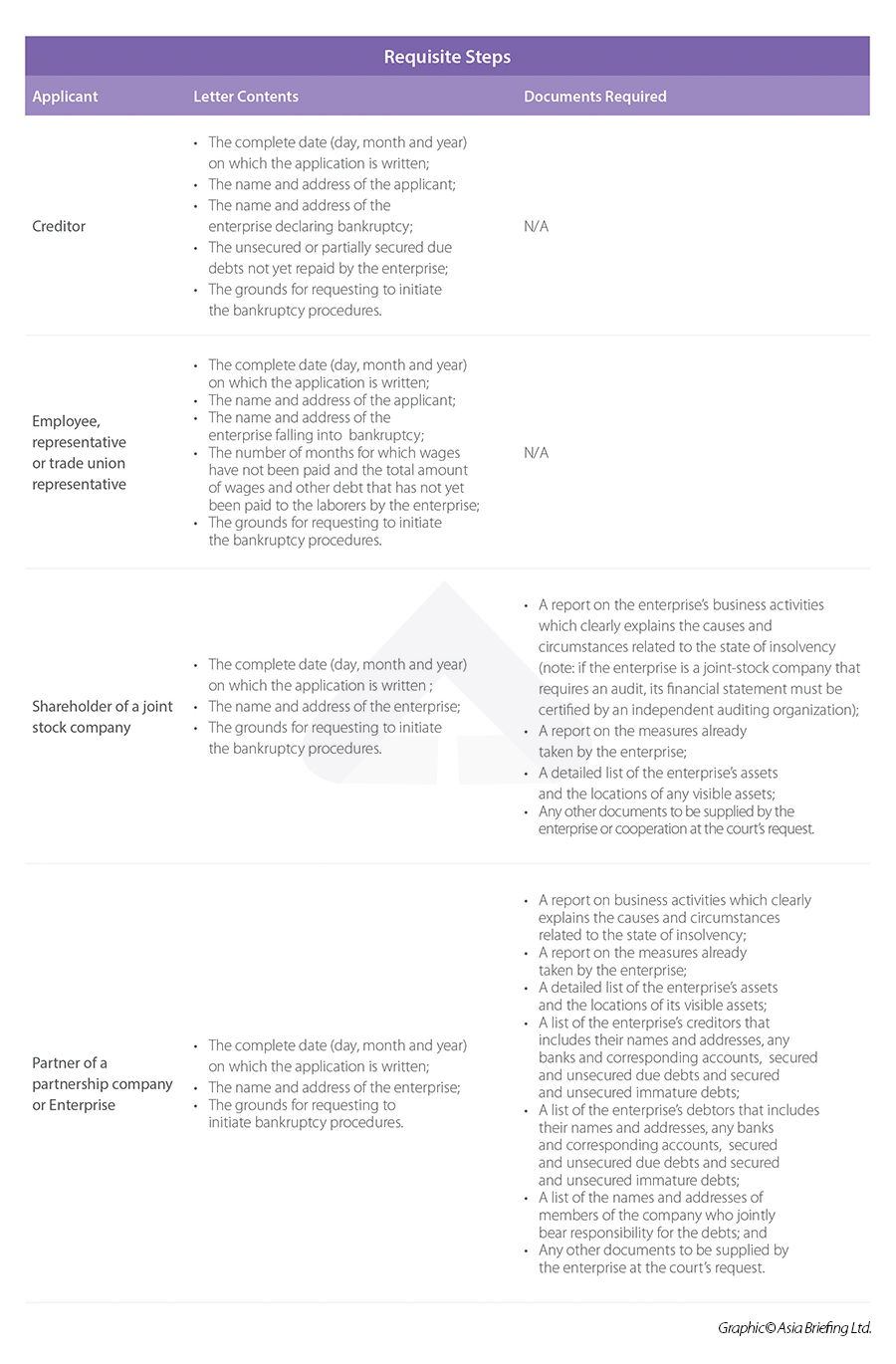Closing Your Business in Vietnam: Guidelines and Procedures
- Investors may choose to close their business depending on the financial situation or simply upgrading from an RO or consolidating business lines.
- While most investors do not hope or expect to stop their business activities, it may take time for executives to become fully aware of the procedures and responsibilities they face when dissolving their operations.
- Vietnam Briefing provides a general guideline for investors looking to close or terminate their operations in Vietnam.
For whatever reason, investors may decide to wind up operations and close a company. Undoubtedly, most investors do not hope or expect to stop their business activities, but it may take time for executives to become fully aware of the responsibilities they can face while dissolving a company.
Reasons for closure:
A company may be dissolved under any of the following circumstances:
- If the operation period stated in the company charter expires and is not extended;
- Decision of dissolution by the enterprise owner (in the case of a private enterprise);
- Decision of dissolution by all unlimited liability partners (in the case of a partnership);
- Decision of dissolution by the Members’ Council or the company owner (in the case of a limited liability company);
- Decision of dissolution at the General Meeting of Shareholders (in the case of a shareholding company);
- If the company does not have the minimum number of members as stipulated by the relevant laws for a period of six consecutive months;
- If the company’s business registration certificate is revoked.
Dissolving a company theoretically takes around four to six months, while it typically takes around 30 days to close down an representative office (RO). But practically speaking, the timeline for completing a dissolution depends significantly on a business organization’s legal & tax compliance affairs as well as their transparency during operation periods.
What needs to be done?
The owner of the company will need to issue a decision of dissolution statement that includes the following content when deciding to dissolve:
- Company name;
- Head office address;
- Business registration number;
- Reason(s) for dissolution;
- The deadline and procedures for liquidating the company’s contracts and loans (which should be within six months of the company’s dissolution date); and
- Solutions for any obligations arising from labor contracts.
The document will need to be signed and sent to each relevant agency and individual (i.e., the business/investment registration agencies, creditors, individuals who have any relating rights, benefits and obligations, and all employees).
To close the company, the investor must:
- Finalize and pay all tax and financial obligations to the government to close the tax code of Company (if any);
- Finalize and pay all personal income tax, social insurance and health insurance of all employees, and get a certificate for finalizing such actions;
- Liquidate all employment contracts and other contracts such as office leasing contract, the contract with some suppliers; and
- Settle all outstanding debts.
Within seven working days after being passed, the resolution on dissolution must be sent to the licensing authorities, all creditors, persons having related rights, obligations or interests, and employees in the Company and must be publicly posted at the head office and branches of the Company.
Subsequently, information on the company’s dissolution must be published on at least one written or electronic newspaper in three consecutive issues, which must also be submitted to the business/investment registration agencies. The content to be published must contain:
- The dissolved company’s name;
- Transaction name;
- Head office address;
- Business telephone number(s);
- Name of legal representative(s); and
- Reason(s) for dissolution.
Debt Resolution
The resolution on dissolution must be sent to creditors together with a notice of the settlement of debt.
A company will be allowed to dissolve after it ensures to discharge any and all debts and property obligations in the following order:

The company must also set up a meeting to liquidate its assets, and the subsequent meeting minutes should include the following information:
- The time and place of the meeting;
- The establishment of an asset liquidation team;
- A list of all of the company’s assets;
- The method(s) used to resolve those assets; and
- The payable amounts that the company actually owes.
Tax and customs
If the company registered an import-export tax code, the code will need to be closed when the company is dissolved. To do this, the company needs to send a letter to the General Department of Customs (GDT) to certify that it does not owe any pending import-export taxes and to also request to close its import-export tax code.
The first step after that is to destroy any financial balance invoices (value-added tax and/or export invoices) that have not yet been issued. The next step is to finalize any overdue taxes, for which the following documents need to be submitted to the tax department:
- A decision on dissolution;
- Minutes from the assets liquidation meeting;
- The latest annual financial report;
- A notice on the destruction of any unused invoices; and
- Any other relevant accounting/tax documents.
Next, the company will need to finalize and settle its tax obligations up until the actual date of the proposed dissolution.
The company’s tax code will be closed within 10 days of completing these steps, and a corresponding notification will be issued subsequently.
Bank account closure and stamp destruction
Each of the company’s bank accounts must be closed in compliance with the policies of the location in which the bank accounts were opened. After which, the company owner has to request that the bank issue a document to certify the closure of the accounts. If the company had never opened up any bank accounts, it must write a statement detailing as much.
Afterward, the company will need to send a written request to the Police Administration on Social Security to destroy its company seal and to return its seal registration certificate.
Business de-registration procedures
Finally, the company must submit a dossier to the Ministry of Planning and Investment (MPI) to notify them of its dissolution. The MPI is the organization that handles and issues the final certification of an enterprise’s dissolution in accordance with the law.
The dossier must include:
- The company’s original investment certificate;
- The company’s financial report for the latest fiscal year (conducted and issued by an independent auditor);
- A complete list of creditors and paid debts (including debt from tax and social insurance obligations);
- Board of Management meeting minutes regarding the dissolution of the company;
- The decision on the dissolution of the company;
- A notice on the dissolution of the company;
- Minutes of the asset liquidation meeting;
- A complete list of current employees and their resolved rights and benefits;
- A letter from the tax authority certifying that the company fulfilled all of its tax obligations;
- A letter from the General Department of Customs certifying that the company has fulfilled its import-export tax obligations and also closed its customs code;
- A letter from the Social Insurance Department certifying that the company has completed all of the necessary procedures and paid all of the relevant insurance payments;
- A document from the Police certifying that the company stamp has been destroyed;
- A document certifying that the company has closed its bank account(s);
- Three consecutive issues of the same newspaper distributed in Vietnam with the posted notification of the company’s dissolution;
- A written commitment stating that the company does not have any copies of its investment certificate and will not keep any;
- Any additional documents as requested by the MPI.
After these documents are submitted and confirmed, the company’s name will be deleted from the MPI’s list of enterprises.
Other circumstances
If an enterprise’s investment certificate/business registration certificate is revoked, it must conduct the dissolution procedures within six months of the date of the certificate’s revocation. The procedures are the same as in the case of dissolution mentioned above.
Bankruptcy procedures
In addition to dissolution due to reasons listed above, a company can close by declaring bankruptcy. In this case, the provincial-level People’s Court is responsible for receiving and handling requests to commence the bankruptcy procedures for enterprises that are established and operated under the Law on Enterprises, while the People’s Court in the location of the Company’s head office will handle the bankruptcy procedures for a foreign-invested enterprise.
Who can apply and what needs to be submitted?
Application dossiers with accompanying letters need to be submitted to the competent court by the following people either directly in person or via certificate post to commence bankruptcy procedures as follows:

 Note: This article was first published in July 2013 and has been updated to include the latest developments.
Note: This article was first published in July 2013 and has been updated to include the latest developments.
About Us
Vietnam Briefing is produced by Dezan Shira & Associates. The firm assists foreign investors throughout Asia from offices across the world, including in Hanoi, Ho Chi Minh City, and Da Nang. Readers may write to vietnam@dezshira.com for more support on doing business in Vietnam.
We also maintain offices or have alliance partners assisting foreign investors in Indonesia, India, Singapore, The Philippines, Malaysia, Thailand, Italy, Germany, and the United States, in addition to practices in Bangladesh and Russia.
- Previous Article Cross-Border Advertising Services in Vietnam: Decree 70
- Next Article US – Vietnam Reach Agreement on Currency, No Tariffs Imposed






